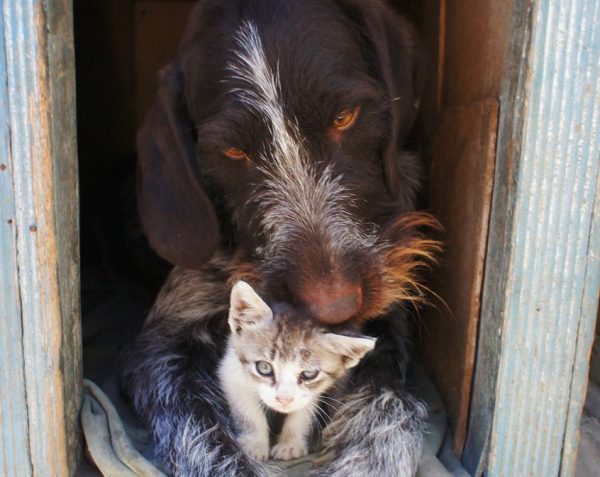Thinking of getting a new kitten? Read our essential do’s and don’ts to make the adoption process hassle free.
here is nothing as adorable as a kitten (just ask the internet). They’re energetic, fun, cute and so very cuddly. But kittens who are separated from their mothers too early can bite and claw more than those who have been properly weaned. They can also develop annoying marking habits or poor relationships with your other pets if not introduced to your home correctly. So, it’s pretty essential that you get things right when it comes to bringing your new kitten home. Here’s how…

"Over here, pick me!"
Don't: adopt too early.
When kittens are adopted too young, they can act out in ways that aren't particularly social: they bite and swat, and use their claws indiscriminately. They can be fearful or less tolerant of other cats, too, because they don’t understand proper feline ‘etiquette’. Ideally, kittens should stay with siblings and their mothers for between 12 to 16 weeks, but that’s not always possible if you’ve picked up a stray or rescued a litter, and means you must be vigilant about teaching your kitten how to use their claws and the litter. In these instances, it’s often helpful to adopt two kittens at once, so they teach each other bite limits and target each other in play instead of targeting your ankles or the furniture. And besides, two is better than one in most things, including kittens.
Do: get kittens fixed.
Cruel as it may (incorrectly) seem, the truth is spaying and neutering prevents pregnancy, urine spraying and even health issues such as breast cancer. Female kittens can get pregnant as early as 4 months old, so don’t put it off. Many vets will spay or neuter kittens at 8 to 12 weeks old because babies recover more quickly than older cats.

"Of all the big brothers, I get this one."
Don’t: rush introductions.
Remember, kittens are tiny and vulnerable, and can get lost if they aren't confined to a kitten-safe space. Let the new kittens get used to one room so they know the location of the litter box, bed, scratching post, food, water bowls and toys. When you can’t watch them, confine the kittens to their safe room. Your existing pets will accept new ones more quickly when only part of the house has been ‘invaded’ and means they can meet with sniffs and paw pats under the door until it’s safe for a nose-to-nose greeting.
Do: train your kitten.
Routinely handle your kitten’s ears, paws and mouth so she learns it’s not scary from you or the vet. Make cat boxes fun playpens by putting toys inside or turn them into napping spots so your kitten gets used to being carried for visits to the vet. Don’t declaw your kitten; instead, train her from the beginning with lots of legal scratch places. Catch your cat in the act of scratching the right objects and reward them with praise, treats or toys.

"Sure, you go first. After all, we do have nine lives."
Do: kitten-proof the house.
Kittens explore everywhere they can by licking, biting and hiding. Chomping or clawing electrical cords or poisonous plants, swallowing string toys or hiding inside the washing machine can be deadly. So it’s crucial you spend some time 'kitten-proofing' your home by removing any potential dangers before bringing her home. Crawl around on your hands and knees for a kitten's eye view to identify any awkward hiding spots (and remember them for when kitty ends ups stuck in a hiding place).
For a full guide on how to prepare your house for of the arrival of a new kitten, click here.

"Pretty tuckered out from this pole... oh no, wait: I spot fresh tights."








